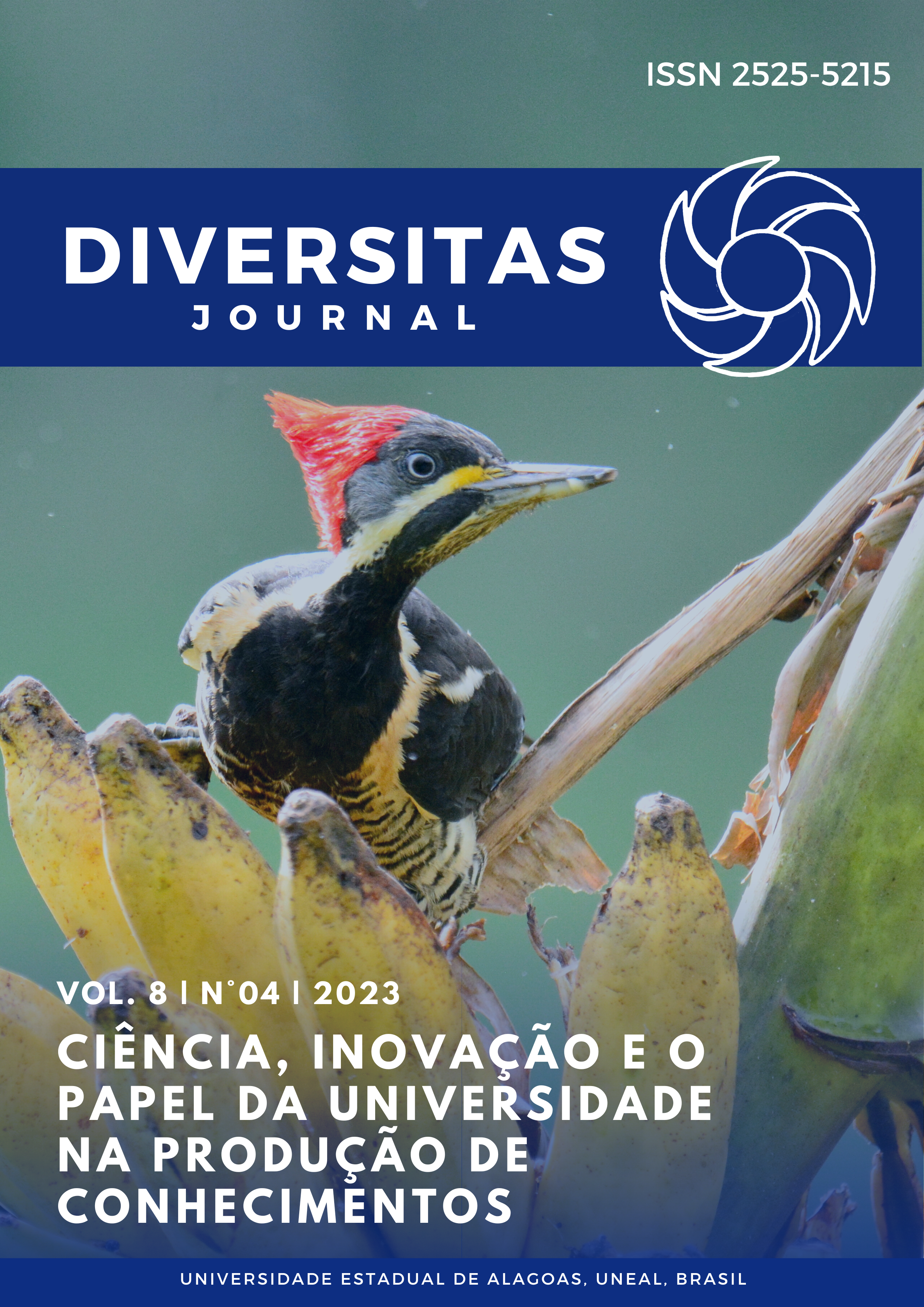Infomemória dos bairros fantasmas de Maceió
Caso Braskem
DOI:
https://doi.org/10.48017/dj.v8i4.2814Palavras-chave:
memória, Projeto Ruptura, EfêmeraResumo
Há cinco anos, Maceió vivencia uma catástrofe ambiental devido à mineração irregular realizada pela empresa Braskem. Na ocasião, 60 mil pessoas saíram de seus locais de moradia em razão de subsidência do solo, e na desocupação, escreveram na estrutura de suas casas mensagens de protesto, que fazem parte da memória não apenas dessa população, mas da sociedade alagoana como um todo. Os escritos trazem vestígios, traços, informações que alimentam memórias coletivas, porém efêmeras, pois as paisagens reais estão vulneráveis a fatores externos, tendo as redes digitais como recurso de preservação, talvez em breve o único, onde são inseridos nas redes sociais em fotografia. Este artigo tem por objetivo analisar, de modo sucinto, a importância dos vestígios infomemoriais presentes nos escritos nas casas dos chamados bairros fantasmas, registrados em fotografia. Os métodos utilizados são os de levantamento bibliográfico e digital; em seguida, é realizada a análise de fotografias disponibilizadas na rede social Instagram, num perfil específico do projeto intitulado Projeto Ruptura. Após a análise das fotografias, concluímos que o material disponibilizado no Instagram é importante para memórias individuais e coletivas dos ex-moradores dos bairros fantasmas, esses novos “lugares de memória”, que permitem acessar e disseminar esse conteúdo. Contudo, a memória consolidada nos patrimônios material ou imaterial é protegida, mas a memória efêmera presentes nos inscritos só poderá contar com os registros digitais, também efêmeros.Métricas
Referências
Arhein, R. (1980). Arte e percepção visual: uma psicologia da visão criadora. Edusp.
Assman, A. (2011). Espaços da recordação: formas e transformações da memória cultural. Editora da Unicamp.
Bosi, E. (1998). A Memória e a Sociedade. Lembrança de velhos. Cia das Letras.
Chauí, Marilena. Convite à Filosofia. Ática.
Cunha, M. R. da. (2011). A Memória na era da reconexão e do esquecimento. Em Questão, 17 (2), pp 101-115. https://seer.ufrgs.br/index.php/EmQuestao/article/view/22062.
Floridi, L. (2014). The 4th Revolution (A quarta revolução). Oxford. Disponível em: https://issc.al.uw.edu.pl/wp-content/uploads/sites/2/2022/05/Luciano-Floridi-The-Fourth-Revolution_-How-the-infosphere-is-reshaping-human-reality-Oxford-University-Press-2014.pdf.
Prodanov, C. C.; Freitas, E. C. (2013) Metodologia do trabalho científico: métodos e técnicas da pesquisa e do trabalho acadêmico. Feevale.
Gil, A.C. (2008). Métodos e técnicas de pesquisa social. Atlas.
Mangan, P. K. V. Construção de memórias digitais virtuais no ciberespaço. In: França, M. C. C. C.; Lopes, C. G.; Bernd, Z. (Org.). Patrimônios memoriais: identidades, práticas sociais e cibercultura. Movimento; Unilasalle.
Massoni, L. H; Morigi, V. J. A efemeridade e a virtualização das memórias da cidade. Morpheus – Estudos Interdisciplinares em Memória Social, Rio de Janeiro, v. 10, n. 17, p. 1-8, 2018. Disponível em: https://seer.unirio.br/morpheus/article/view/7692.
Monteiro, S. D; Carelli, A. E. (2007, 31 outubro) Ciberespaço, memória e esquecimento. [Comunicação Oral]. Encontro Nacional de Pesquisa em Ciência da Informação, Salvador. Disponível em: https://brapci.inf.br/index.php/res/v/171512.
Nascimento, G. F. C. L; Azevedo, C. X. C. N. (2016, 25 novembro). Concepção Infomemorial no Campo da Ciência da Informação: Aspectos Teóricos e Epistemológicos. [Pôster]. Encontro Nacional de Pesquisa em Ciência da Informação, Salvador. Disponível em: https://www.brapci.inf.br/index.php/res/v/191462.
Nascimento, P. dos S; Silva Sobrinho, H. F. da. A “língua da mineração”: produção de sentidos na comunicação midiática da empresa Braskem S.A. em Maceió - AL. RUA, Campinas, SP, v. 28, n. 1, p. 5–25, 2022. DOI: 10.20396/rua.v28i1.8670291. Disponível em: https://periodicos.sbu.unicamp.br/ojs/index.php/rua/article/view/8670291.
Nora, P. (1993). Entre memória e história. A problemática dos lugares. Projeto História, 10, pp 7-28. https://revistas.pucsp.br/revph/article/view/12101.
Pessach, G. (2008). Memory Institutions: Social Remebering, Privatization and Its Discontentes. Journal of International Media and Entertainment Law, 1. (n.2), p. 71-149. https://papers.ssrn.com/sol3/papers.cfm?abstract_id=1085267.
Puls, M. (2016, março 11). Cor ou preto e branco? Razões de uma escolha. Zum - Revista de Fotografia. https://revistazum.com.br/radar/cor-ou-pb/.
Downloads
Publicado
Como Citar
Edição
Seção
Licença
Copyright (c) 2023 Isaac Roberto Ferreira, Leilah Santiago Bufrem

Este trabalho está licenciado sob uma licença Creative Commons Attribution 4.0 International License.
O periodico Diversitas Journal expressa que os artigos são de unica responsabilidade dos Autores, conhecedores da legislação Brasileira e internacional. Os artigos são revisados pelos pares e devem ter o cuidado de avisar da possível incidencia de plagiarismo. Contudo o plagio é uma ação incontestavel dos autores. A Diversitas Journal não publicará artigos com indicios de Plagiarismos. Artigos com plagios serão tratados em conformidade com os procedimentos de plagiarismo COPE.
A violação dos direitos autorais constitui crime, previsto no artigo 184, do Código Penal Brasileiro:
“Art. 184 Violar direitos de autor e os que lhe são conexos: Pena – detenção, de 3 (três) meses a 1 (um) ano, ou multa. § 1o Se a violação consistir em reprodução total ou parcial, com intuito de lucro direto ou indireto, por qualquer meio ou processo, de obra intelectual, interpretação, execução ou fonograma, sem autorização expressa do autor, do artista intérprete ou executante, do produtor, conforme o caso, ou de quem os represente: Pena – reclusão, de 2 (dois) a 4 (quatro) anos, e multa.”















.png)




